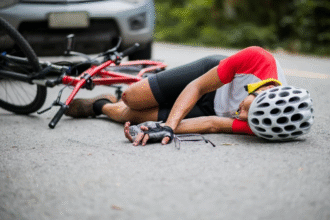Aging populations face a unique set of challenges when it comes to maintaining health and preventing injuries. As individuals age, their risk of falls, fractures, and other injuries increases due to factors such as decreased bone density, impaired balance, and slower reflexes. Injury prevention in this demographic is crucial for sustaining their independence and improving their quality of life. Strategies to mitigate these risks include implementing exercise programs to improve strength and balance, ensuring environments are safe and fall-proof, and educating seniors on ways to protect themselves from harm.
Personal injury advocates play a pivotal role in spreading awareness and providing resources for injury prevention. They assist aging individuals in understanding their rights and the importance of safety measures in everyday activities. Advocates also work towards policy change and improved standards in elder care facilities, helping to create a safer living space for the elderly. By promoting best practices for injury prevention, advocates contribute to reducing the incidence of accidents among older adults.
Effective injury prevention plans for aging populations involve collaborative efforts from healthcare professionals, family members, and the individuals themselves. Regular health check-ups are recommended to monitor risk factors such as osteoporosis or vision impairment that could lead to injuries. Homes and communal living spaces should be equipped with aids like handrails and non-slip mats. Moreover, personal alert systems can be utilized to ensure help is readily available in case of an emergency. Through these comprehensive measures, it is possible to significantly lower the likelihood of injuries among the elderly and sustain their well-being as they age.
Assessing Risks and Challenges for the Aging Population
Understanding the risks and challenges faced by the aging population is pivotal for injury prevention. This includes recognizing physical and cognitive changes, as well as identifying common injuries and their causes.
Physical and Cognitive Changes
As individuals age, they experience a range of physical and cognitive changes which can increase the risk of injury. Physically, there may be a decrease in bone density, muscle strength, and coordination, leading to a higher likelihood of falls. Cognitive changes can include a decline in memory, problem-solving skills, and reaction times. It is essential to consider these changes when evaluating risks for this demographic.
- Bone Density: Osteoporosis prevalence
- Muscle Strength: Sarcopenia impact
- Coordination: Balance issues leading to falls
Common Injuries and Their Causes
The aging population commonly faces certain types of injuries, with falls being the leading cause. Identifying the causes is crucial for prevention strategies. Causes of falls can often be attributed to environmental hazards, medication side effects, or chronic conditions that impair balance or vision.
Table: Common Injuries and Their Causes
| Injury Type | Common Causes |
| Falls | Environmental hazards, medications, chronic conditions |
| Fractures | Osteoporosis, falls |
| Joint Dislocation | Decreased muscle strength, accidents |
Injury prevention for the aging population may include personal injury advocates who emphasize the importance of safe environments and practices, and who can provide guidance on reducing risk factors.
Strategies for Injury Prevention
Effective injury prevention in aging populations involves creating safer environments and fostering health practices that mitigate risk. Priority should be given to strategies that are evidence-based and consider the unique needs of older adults.
Home Safety Modifications
Home safety modifications aim to reduce the incidence of falls and other injuries within the home environment. Simple changes can significantly impact an older adult’s well-being.
- Flooring: Replace high-pile carpets with low-pile alternatives to prevent tripping.
- Bathroom: Install grab bars and use non-slip mats to prevent slips.
- Lighting: Ensure all areas are well-lit, especially pathways and stairs.
A personal injury advocate underscores the importance of tailored home modifications to address specific safety concerns for individuals.
Community-Based Programs
Community-based programs that focus on education and awareness can empower older individuals to prevent injuries.
- Workshops: Provide training on risk factors and injury prevention.
- Support Groups: Offer spaces where older adults can share experiences and strategies.
- Outreach: Extend services to those who may not seek help on their own.
Experts note that communities play a critical role in disseminating safety information.
Physical Activity and Fall Prevention
Engaging in regular physical activity is vital for maintaining balance, strength, and flexibility, which are essential for fall prevention.
- Exercise Programs: Tailored to older adults’ fitness levels.
- Balance Training: Activities like Tai Chi that improve stability.
- Medical Assessment: Regular check-ups to assess risks and adapt physical activities accordingly.
Physical activity programs, when properly designed, can effectively reduce the risk of falls and associated injuries.














